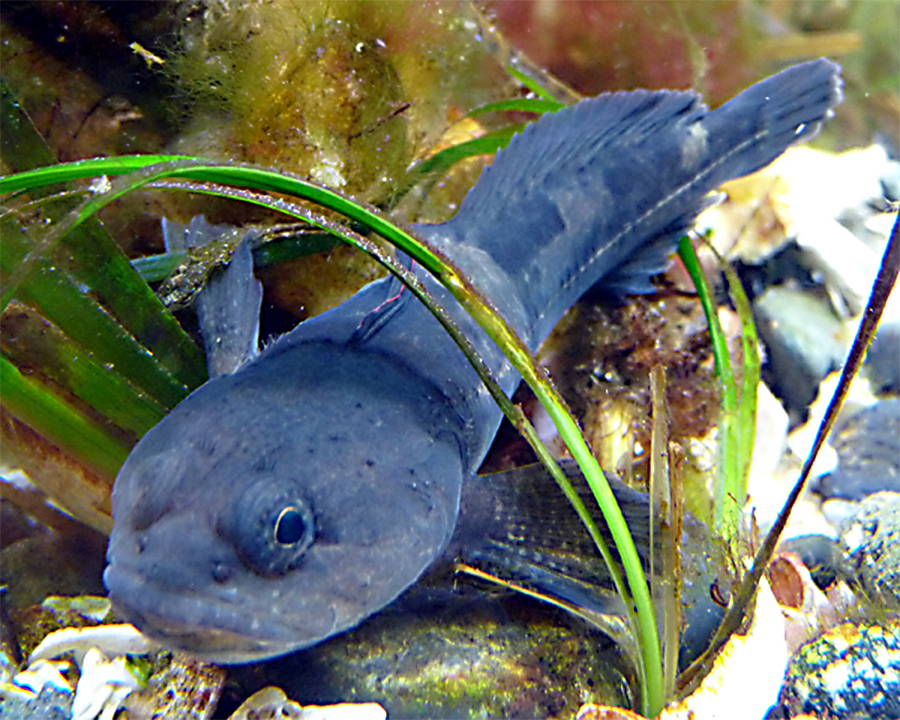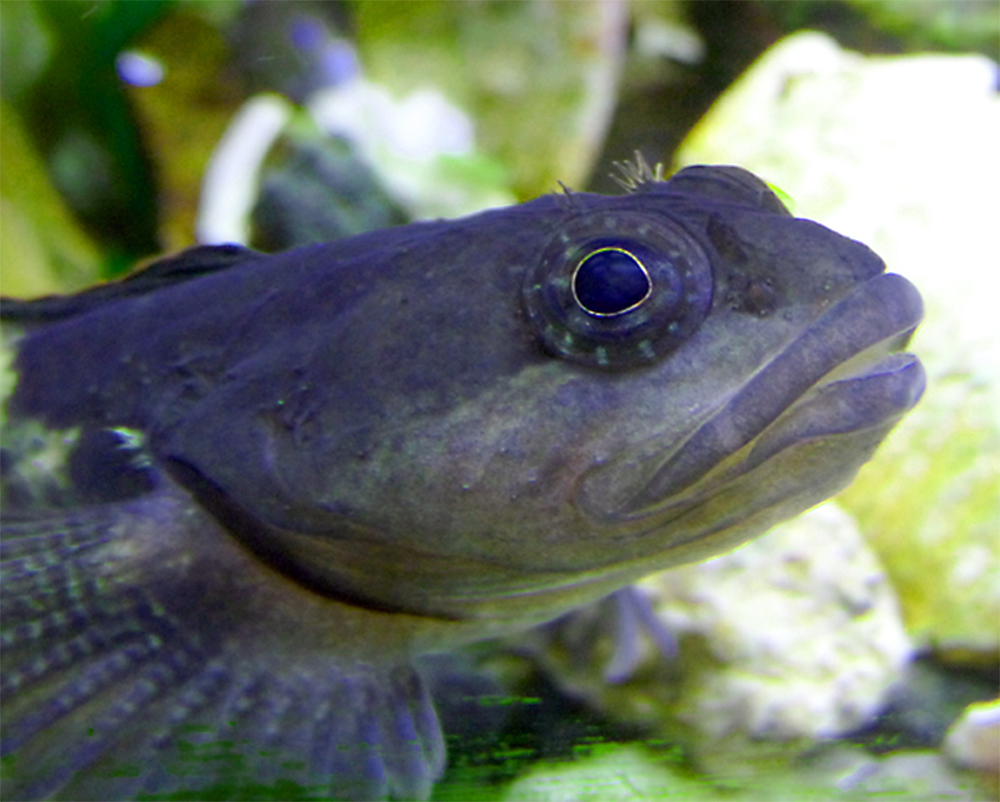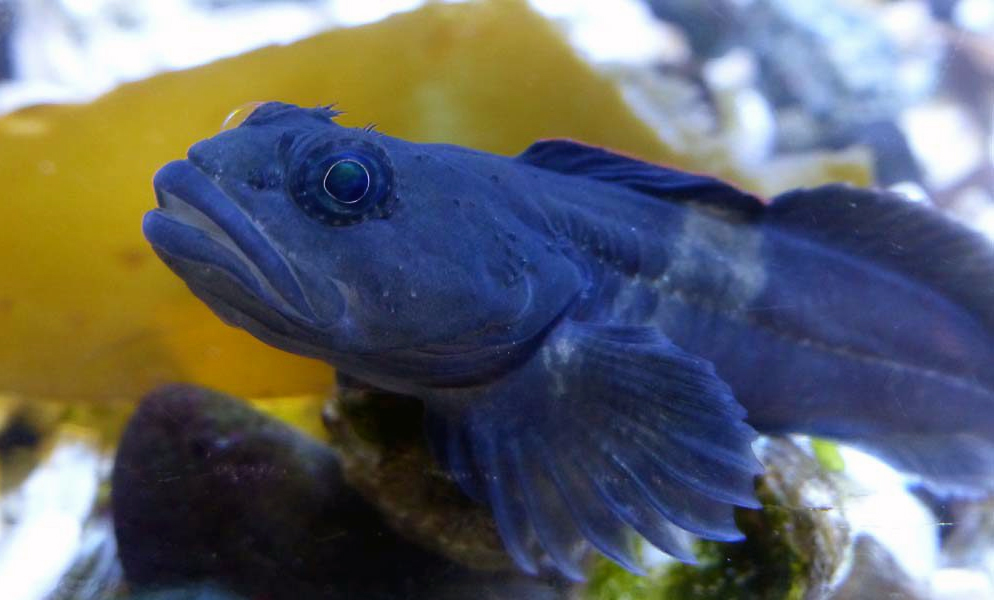Authors: Julian Mulhall and Forest Moon-Macskimming
Common names: Rosylip Sculpin, Rosy-lipped Sculpin
Scientific name: Ascelichthys rhodorus
Size range: up to 15cm (6in)
Identifying features: The eyes are black or dark and the body colour is mostly black, with a white band across its dorsal fin and body, and white patches along its sides. The lips are sometimes red as well as some red can be found along the top edge of the first spiny section of the dorsal fin. The dorsal fin is the length from its head to its tail. Unlike most other sculpins, the Rosylip Sculpin has no pelvic fins. An interesting fact is that the Rosylip Sculpin is able to survive for several hours out of water on moist surfaces.

Habitat: Intertidal to 15 m (50 feet) from Alaska to California. It is found on rocky shorelines, gravel beaches or beaches with a lot of seaweed.
Behavior: Sporadically it displays outgoing behavior but usually it remains shy and hidden and divers can have a hard time seeing them since they are so well camouflaged and often sit motionless. While observing one in our class aquarium it would return to the same area of the tank (under/behind algae and rocks) when it was not searching for food.
Prey: The Rosylip Sculpin is a bottom dweller so it eats food found near the bottom of the water it is in. Its favorite foods are worms, crabs, small fish and shrimp, but it will eat anything it is able to. What eats it? The Rosylip Sculpin is luckily very adept at blending in with its surroundings, but sometimes it is out-smarted. It is eaten by animals who feed near the shore. These animals include larger fish, river otters and shore birds such as the Great Blue Heron.
Life cycle: Rosylip Sculpins may live for up to five years. Its life span is generally determined by its location and the types of predators in that location. It lays eggs in winter and spring each year. These eggs can be pink or green and may be found on rocks near the shore.
Photos by D. Young
Video by J. Mulhall, F. Moon-Macskimming, and D. Young
References:
Kozloff, E. N. (1983). Seashore Life of the Northern Pacific Coast. Seattle, WA: University of Washington Press.
Lamb, A. and Hanby, B. P. (2005). Marine Life of the Pacific Northwest. Madeira Park, BC: Harbour Publishing.



